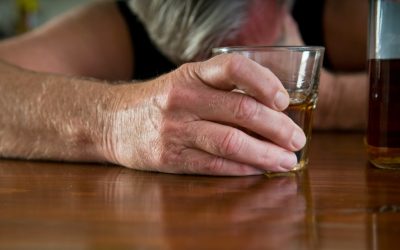All findings are reported in odds ratios (ORs) or adjusted odds ratios (AORs) using a 95% confidence interval (CI) and p-value for significance criteria. It was advanced in genetics that introduced into biology theoretical ideas of a new kind of science involving coding, information-transfer, error, regulation and control, additional to energy-transfer and -exchanges covered by physical–chemical laws (equations). Further, theories of genetics have always been thoroughly interactional across domains, in evolutionary theory, and recently in the new field of epigenetics, including in psychiatry (Campanile, Fanelli, Fabbri, Serretti, & Mendlewicz, 2022; Cecil, 2020). The clearest expression of dualist assumptions in psychology was in behaviorism, which explicitly excluded mental processes from explanations of behavior – a position much like Engel attributed to the BMM.
Psycho-Social Systems
- The biopsychosocial model is useful for the study and understanding of depression in children and adolescents, as well as adults.
- For instance, at-risk individuals had a history of criminality, serious psychological distress, suicidality, no private health insurance, and substance dependence or abuse.
- Also, the biological and psychological impacts of using substances, as well as individual reflections on either quitting all substances or maintaining the use of alcohol or marihuana, were essential parts of the informants’ meaning-making.
- The purpose of this study was to fill in a critical gap in the literature to improve population-level prevention strategies by identifying the most salient predictors of opioid misuse and/or use disorder.
- Nothing in the relevant literature indicates this occurred (Bair et al. 2013; Slade et al. 2016).
Joe’s wife complains that he never shovels the snow and shoots a knowing glance to his brother. With his masculinity threatened, Joe grabs a shovel and begins to vigorously http://museum.by/en/node/42237 clear the driveway. If you are wondering if this really does happen, it does—emergency rooms intentionally gear up for an increase in heart attacks following snowstorms.
- As such, a longitudinal approach is needed to understand the mechanism of human behavior.
- So long as medical actors do not attempt to use BPSM itself for the purposes of defining disease(s) or establishing causal relationships, it can play a useful role in medicine.
- From around the 1960s onwards, however, behaviorism was swept away in the cognitive revolution (Miller, 2003; Xiong & Proctor, 2018).
- Epidemiologically, it is well established that social determinants of health, including major racial and ethnic disparities, play a significant role in the risk for addiction [75, 76].
- It also received considerable attention at at least one conference put on by prestigious health institutions (National Academies of Science 2019) and is echoed in the “Social-Ecological Model” of violence used by the U.S.
- Understanding SUD is crucial because it affects legal regulations, support and treatment services, and the attitudes of both service providers and the public regarding people with SUD.
- A subsequent 2000 paper by McLellan et al. [2] examined whether data justify distinguishing addiction from other conditions for which a disease label is rarely questioned, such as diabetes, hypertension or asthma.
Learning theory-based models
![]()
![]()
This study emphasised that inpatient treatment is necessary but inadequate for many people with SUD, and long-time access to various professional and social support systems is crucial in the recovery process. Receiving such support is not understood as a defeat, and each person’s resources and vulnerabilities should be recognized and acknowledged. The recovery concepts have underpinned a long history of measuring treatment outcomes for mental health issues and substance use problems. The most common model is the clinical recovery model, which aims to minimise core symptoms, such as the problematic use of substances or mental health issues [6]. A personal and social approach understands the process of being in recovery as an ongoing, non-linear process.
- Philosophically, this is best understood as being aligned with indeterminism, a perspective that has a deep history in philosophy and psychology [84].
- These studies focus on Engel’s 1977 article and the BPSM literatures on temporomandibular disorder and irritable bowel syndrome.
- This statement, while correct in pointing out broad heritability of behavioral traits, misses a fundamental point.
Negotiating the Relationship Between Addiction, Ethics, and Brain Science


Concurrent mental illness and addiction the norm rather than exception further characterize individuals with severe opiate addiction (Rush, Urbanoski, Bassani, et al. 2008). Both social norms and laws influence attitudes, perceptions, and beliefs of the effects of substances and considerably affect consumption rates (Babor, Caetano, Casswell et al. 2003; Hawkins, Catalano, and Miller 1992). Proponents of a ‘war http://fastleads.ru/c8-p25.html on drugs’, for example, believe that laws and policies that are lenient towards substance use are linked with greater prevalence of use and criminal activity. In one study comparing cannabis use in San Francisco (where cannabis is criminalized) and Amsterdam (de facto decriminalization), there was no evidence to support claims that criminalization laws reduce use or that decriminalization increases use.
- In addition to having the potential to undermine research in the ways discussed above, it creates ethical problems.
- His bio-psychosocial model was a call to change our way of understanding the patient and to expand the domain of medical knowledge to address the needs of each patient.
- Notably, however, such acknowledgments rarely seem to lead to the conclusion that the ailments in question are not medical diseases, or that they should be relinquished to other epistemic communities for primary study and treatment.
Indeed, in the original Adverse Childhood Experiences (ACEs) study, Felitti et al. (1998) found that more ACEs increased the odds of subsequent drug and alcohol use. One explanation for this trend is that the toxic stress from trauma leads to a dysregulated stress response. An individual’s stress hormones (cortisol and adrenaline) are chronically elevated (Burke Harris, 2018; van der Kolk, 2014). Although there is no “addiction gene” to definitively identify a person as being at risk for http://www.gitaristam.ru/accords/eng/t/TheCranberries/departed7.text.htm addiction, it is evident through twin studies, adoption studies, family studies, and more recently, epigenetic studies that addiction has a genetic component. Individuals who are genetically predisposed for addiction enter the world with a greater risk of becoming addicted at some point in their lives. To get a flavor of the difference in emphasis between a biomedical and biopsychosocial view, consider the hypothetical case of Joe, an overweight 60-year-old man who rarely exercises.


Overview of the BPSM


